5 Ways Protecting Biodiversity Helps the Climate
- August 9, 2024
- 0 comment
In the intricate web of life on Earth, biodiversity and climate are inextricably linked. Biodiversity, the variety of life in all its forms and interactions, is not just a marker of a healthy planet; it is also a crucial component in regulating and stabilizing the climate. Protecting biodiversity is not just an ecological or ethical imperative but a significant climate action. Here are five ways in which protecting biodiversity helps the climate.

Table of Content for Biodiversity List:
- Carbon Sequestration
- Climate Regulation
- Enhancing Ecosystem Resilience
- Supporting Water Cycle and Quality
- Providing Livelihoods and Food Security
Understanding About 5 Ways Protecting Biodiversity
Understanding the ways protecting biodiversity helps the climate involves recognizing the interconnectedness of ecosystems and the climate system. Firstly, diverse ecosystems, such as forests, wetlands, and grasslands, act as significant carbon sinks, absorbing carbon dioxide from the atmosphere through photosynthesis and storing it in biomass and soils.
Secondly, biodiversity enhances ecosystem resilience, allowing environments to withstand and recover from climate-induced stresses like extreme weather events, pests, and diseases. Thirdly, diverse plant species improve the stability and functionality of ecosystems, ensuring sustained climate regulation through processes such as transpiration and cloud formation.
Fourthly, biodiversity supports the water cycle by maintaining vegetation cover that promotes soil moisture retention and groundwater recharge, crucial for mitigating droughts and floods. Finally, preserving biodiversity ensures the availability of ecosystem services that underpin human livelihoods, such as food, clean water, and medicinal resources, thereby enhancing community resilience to climate impacts. By protecting biodiversity, we bolster natural systems that are vital for carbon sequestration, climate stabilization, and overall ecological balance, contributing to a healthier planet.
1. Carbon Sequestration
One of the most significant contributions of biodiversity to climate change mitigation is through carbon sequestration. Forests, wetlands, grasslands, and other ecosystems act as carbon sinks, absorbing more carbon dioxide than they release. This process is vital for regulating the Earth’s climate.
For instance, tropical rainforests, which are among the most biodiverse ecosystems on the planet, store vast amounts of carbon in their vegetation and soil. Deforestation and degradation of these forests release stored carbon, contributing significantly to global greenhouse gas emissions.

By protecting and restoring diverse ecosystems, we enhance their capacity to sequester carbon. A diverse range of plant species can increase the resilience of these ecosystems to environmental changes and disturbances, thereby ensuring sustained carbon sequestration. For example, a study by the Smithsonian Tropical Research Institute found that diverse tropical forests sequester more carbon than monoculture plantations due to the variety of trees and plants that capture and store carbon at different rates and times.
- Forests: Tropical and temperate forests are some of the most significant carbon sinks. Trees and other vegetation absorb CO2 during photosynthesis and store it in their wood and leaves. Diverse forests with a variety of tree species are more resilient to diseases, pests, and changing climate conditions, maintaining their capacity to sequester carbon over time.
- Peatlands: These wetland ecosystems store vast amounts of carbon in waterlogged soils. Biodiverse peatlands, rich in plant species adapted to saturated conditions, can lock away carbon for thousands of years.
- Oceans: Marine ecosystems, particularly mangroves, seagrasses, and kelp forests, are vital for carbon storage. These habitats support diverse marine life that contributes to the carbon cycle, from tiny phytoplankton to large marine mammals.
2. Climate Regulation
Biodiverse ecosystems play a crucial role in regulating local and global climates. Forests, wetlands, and oceans influence weather patterns, precipitation, and temperature. They help maintain the balance of gases in the atmosphere, particularly through the process of photosynthesis, where plants absorb carbon dioxide and release oxygen.

Mangroves, for example, are highly effective at regulating coastal climates. They stabilize shorelines, reduce the impact of storm surges, and prevent coastal erosion. This not only protects coastal communities but also helps maintain the integrity of marine and coastal ecosystems, which are crucial for climate regulation. According to research published in “Nature Communications,” mangrove forests can reduce wave heights by up to 66%, highlighting their importance in climate adaptation strategies.
Climate Resilience and Adaptation:
- Ecosystem Stability: Diverse ecosystems are better able to withstand disturbances such as droughts, floods, and hurricanes. For instance, coral reefs with a wide variety of species are more likely to recover from bleaching events caused by rising sea temperatures.
- Agricultural Productivity: Biodiversity in agricultural landscapes, including a variety of crops and natural pollinators, helps ensure food security. Diverse farming systems are more resistant to pests and diseases, reducing the need for chemical inputs and enhancing resilience to climate variability.
- Water Regulation: Wetlands and forests play a critical role in regulating water cycles. Healthy, biodiverse wetlands act as natural sponges, absorbing excess rainfall and releasing it slowly, reducing the risk of floods and droughts. Forests maintain watershed health, ensuring a steady supply of clean water.
3. Enhancing Ecosystem Resilience
Biodiversity increases the resilience of ecosystems to climate change and other environmental stresses. Diverse ecosystems are better able to withstand and recover from extreme weather events, pests, and diseases. This resilience is crucial for maintaining ecosystem services such as water purification, soil fertility, and crop pollination, all of which are vital for human survival and well-being.

For instance, agricultural systems that incorporate a variety of crops are more resilient to climate variability than monocultures. Diverse plant species can provide a buffer against pests and diseases, reducing the need for chemical inputs and enhancing food security. Similarly, diverse forest ecosystems are less likely to suffer from catastrophic losses due to pests or diseases, as the presence of multiple species can prevent the spread of such threats.
Soil Health and Fertility:
- Organic Matter: Diverse plant species contribute to soil organic matter through leaf litter and root exudates. This organic matter enhances soil structure, water retention, and nutrient cycling.
- Microbial Diversity: Soils teeming with microorganisms, such as bacteria and fungi, play a crucial role in nutrient cycling and carbon sequestration. Diverse microbial communities help break down organic matter and convert it into forms that plants can use, promoting healthy plant growth and further carbon storage.
- Erosion Control: Plant diversity helps prevent soil erosion by stabilizing the soil with their root systems. Forests and grasslands with a variety of species are more effective at preventing erosion than monocultures.
4. Supporting Water Cycle and Quality
Biodiverse ecosystems play a crucial role in maintaining the water cycle and ensuring water quality. Forests, wetlands, and grasslands act as natural water filtration systems, removing pollutants and regulating water flow. This is particularly important in the face of climate change, which is expected to increase the frequency and severity of extreme weather events such as droughts and floods.

For example, wetlands, often referred to as the “kidneys of the landscape,” filter pollutants from water, store floodwaters, and recharge groundwater supplies. The presence of a diverse array of plant and animal species in wetlands enhances these functions, making them more effective at providing clean water and reducing the impacts of extreme weather events. Protecting and restoring wetlands is thus a key strategy for climate adaptation and mitigation.
Pollination and Seed Dispersal:
- Pollinators: Bees, butterflies, birds, bats, and other pollinators are crucial for the reproduction of flowering plants. Biodiverse ecosystems support a wide range of pollinators, which in turn supports the growth of diverse plant communities that sequester carbon and provide habitat for other species.
- Seed Dispersers: Animals such as birds, mammals, and insects help disperse seeds, facilitating the regeneration and spread of plant species. This process is vital for maintaining forest dynamics and promoting the growth of new vegetation that can sequester carbon.
5. Providing Livelihoods and Food Security
Biodiversity is directly linked to the livelihoods and food security of millions of people around the world, particularly in developing countries. Many communities rely on diverse ecosystems for their daily needs, including food, medicine, and materials. Protecting biodiversity ensures the continued availability of these resources, which is especially important in the face of climate change.

For example, diverse agricultural systems can provide a variety of crops and livestock, enhancing food security and resilience to climate change. Traditional agroforestry systems, which combine trees with crops and livestock, are a prime example of how biodiversity can support sustainable livelihoods. These systems can improve soil fertility, provide shade and shelter, and enhance resilience to climate variability.
Climate Regulation through Biogeochemical Cycles:
- Nitrogen Cycle: Diverse plant and microbial communities contribute to the nitrogen cycle by fixing atmospheric nitrogen into forms that plants can use. This process supports plant growth and carbon sequestration.
- Hydrological Cycle: Forests and wetlands, rich in biodiversity, are critical for maintaining the hydrological cycle. They influence precipitation patterns, groundwater recharge, and evaporation rates, all of which affect climate.
- Carbon Cycle: The carbon cycle is intricately linked with biodiversity. Diverse ecosystems store and cycle carbon in various forms, from living biomass to soil organic matter and oceanic carbon sinks.
Case Study: The Amazon Rainforest
The Amazon Rainforest, often referred to as the “lungs of the Earth,” is a prime example of how biodiversity and climate protection are intertwined. Covering approximately 6.7 million square kilometers, the Amazon is the largest tropical rainforest in the world and is home to an estimated 10% of all known species. This incredible biodiversity plays a crucial role in regulating the global climate.
The Amazon acts as a massive carbon sink, absorbing large amounts of carbon dioxide from the atmosphere. However, deforestation and degradation are threatening this vital ecosystem. When trees are cut down or burned, the stored carbon is released into the atmosphere, contributing to climate change. Protecting the Amazon is thus essential for both biodiversity conservation and climate mitigation.
Efforts to protect the Amazon include establishing protected areas, promoting sustainable land use practices, and supporting indigenous communities who are the traditional stewards of the forest. These efforts not only help preserve biodiversity but also enhance the Amazon’s ability to sequester carbon and regulate the climate.
Final Thoughts
Protecting biodiversity is not just about preserving the beauty and variety of life on Earth; it is a critical strategy for combating climate change. Through carbon sequestration, climate regulation, enhancing ecosystem resilience, supporting the water cycle, and providing livelihoods and food security, biodiversity plays an essential role in maintaining the health and stability of our planet. As we face the dual challenges of biodiversity loss and climate change, it is more important than ever to recognize and act on the interconnectedness of these issues. By protecting and restoring biodiversity, we can build a more resilient and sustainable future for all.
Frequently Asked Questions (FAQs)
- What is biodiversity?
Biodiversity refers to the variety of life in all its forms, including genes, species, and ecosystems. It encompasses the different plants, animals, fungi, and microorganisms, as well as the genetic diversity within these species and the ecosystems they form. - How does protecting biodiversity help in carbon sequestration?
Protecting biodiversity helps in carbon sequestration by maintaining and restoring ecosystems like forests, wetlands, and grasslands. These ecosystems act as carbon sinks, absorbing more carbon dioxide than they release. Diverse plant species enhance the resilience and capacity of these ecosystems to sequester carbon. - What role do mangroves play in climate regulation?
Mangroves play a crucial role in climate regulation by stabilizing shorelines, reducing the impact of storm surges, and preventing coastal erosion. They help maintain the integrity of marine and coastal ecosystems, which are essential for regulating local climates and protecting coastal communities from extreme weather events. - How does biodiversity increase ecosystem resilience?
Biodiversity increases ecosystem resilience by enabling ecosystems to withstand and recover from extreme weather events, pests, and diseases. A diverse range of species ensures that if one species is affected, others can continue to provide essential ecosystem services like water purification and crop pollination. - Why are wetlands important for the water cycle?
Wetlands are important for the water cycle because they act as natural water filtration systems, removing pollutants and regulating water flow. They store floodwaters, recharge groundwater supplies, and help maintain water quality, making them vital for managing the impacts of climate change. - How does biodiversity support food security?
Biodiversity supports food security by providing a variety of crops and livestock, which enhances resilience to climate variability. Diverse agricultural systems, such as traditional agroforestry, improve soil fertility, provide shade and shelter, and ensure a reliable food supply even in changing climatic conditions. - What are the threats to the Amazon Rainforest and its biodiversity?
The Amazon Rainforest faces threats from deforestation and degradation, primarily due to logging, agriculture, and infrastructure development. These activities release stored carbon into the atmosphere, contributing to climate change and threatening the incredible biodiversity of the Amazon. - How can protecting indigenous communities help conserve biodiversity?
Protecting indigenous communities helps conserve biodiversity because these communities are traditional stewards of the land. They possess extensive knowledge of sustainable land use practices that preserve the health and diversity of ecosystems. Supporting their rights and livelihoods is essential for effective biodiversity conservation. - What are the benefits of diverse agricultural systems over monocultures?
Diverse agricultural systems offer several benefits over monocultures, including enhanced resilience to pests and diseases, reduced need for chemical inputs, and improved soil health. They also provide a variety of crops, which contributes to food security and reduces the risk of crop failure due to climate variability. - Why is it important to recognize the interconnectedness of biodiversity and climate change?
Recognizing the interconnectedness of biodiversity and climate change is important because the two issues are deeply linked. Biodiversity plays a crucial role in regulating the climate, and climate change impacts biodiversity. Addressing one without considering the other is insufficient for achieving long-term sustainability and resilience.
We hope this guide provides a clear understanding of how protecting biodiversity plays a crucial role in mitigating climate change. Have experiences or insights on biodiversity conservation and its impact on the climate? Share your thoughts and join the conversation below. Your contributions could help others appreciate the importance of biodiversity and inspire further actions to protect our planet. Don’t forget to share this article with friends, colleagues, and fellow environmental enthusiasts!

Gilbert Griffin
Forestry AuthorGilbert Griffin is a forest management expert specializing in sustainable practices, forest health, conservation, and land management. With extensive knowledge in pest control, disease management, and habitat restoration, Gilbert develops strategies to preserve forest ecosystems and biodiversity. Passionate about the natural world, Gilbert adapts to changes in forest management and stays updated through continuous learning. Gilbert also provides seasonal advice to optimize forest care throughout the year.


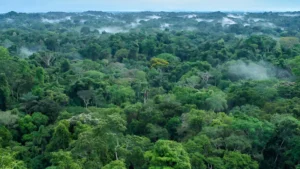
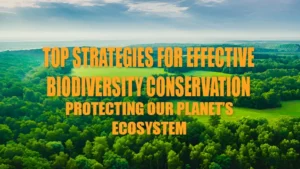

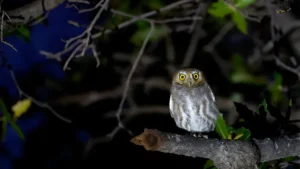


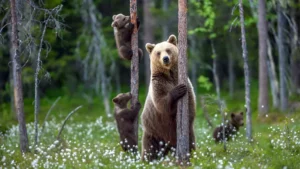
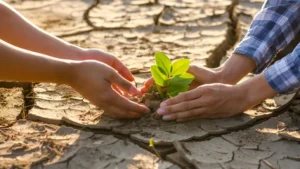
Leave your comment